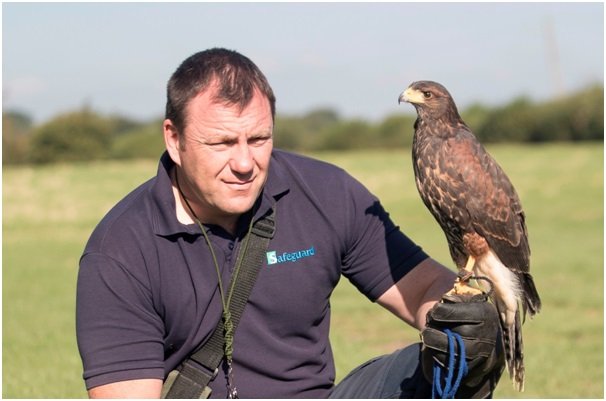An innovative pest and bird control company is offering a 3000-year-old solution to remove and prevent pest birds from invading commercial premises.
Falconry, known to some as hawking, was developed in the ancient Persian Empire to safeguard food and crops from thieving animals and birds. Now Kent-based company; Safeguard Pest Control, are applying these same bird control skills which have passed the test of time and are now being integrated within modern day living.
Pest species such as feral pigeons often inhabit stadiums and railway stations and with then presence of these birds comes the related contamination. Subsequently these roosting areas can become a breeding ground for bird mite, lice, moths and blue bottle maggots. This fouling can also cause infectious diseases such as Salmonellosis, Allergic Alveolitis, Chlamydiosis, Cryptococosis and Campylobacter.
The introduction of a predator bird within an established roosting area can have an immediate and lasting impact, displacing the resident birds and preventing further contamination.
Safeguard’s John Lacey trains and handles 2 birds of prey, offering protection to customers in all kinds of environments from train depots to heritage sites. John’s feathered friends are a male Harris Hawk called “Beau” and a female called “Rio”, with female “raptors” larger and more aggressive than males. John began his falconry journey at the age of 12 keeping a Kestrel called “Kes” and has since joined the nationally accredited LANTRA Falconry Award programme.
Clive Bonny, advisor for the Responsible Business Award says “The solution offered by this method of population management is not only effective but also environmentally friendly. Safeguard should be applauded for addressing an age old problem with a proven “Green” solution.”
For more information contact James Sheehan info@safeguardpestcontrol.co.uk
01959 565777
Below John Lacey and his Harris Hawks, Beau and Rio


